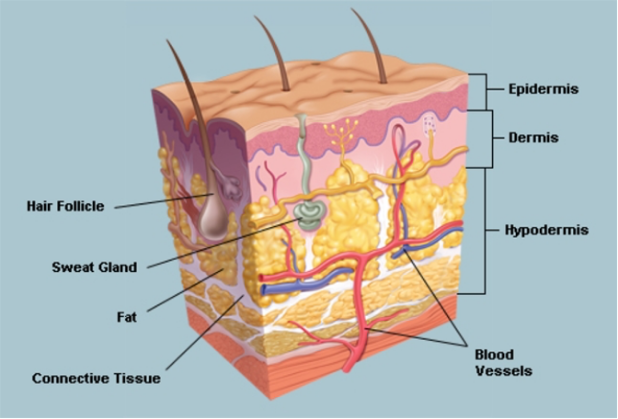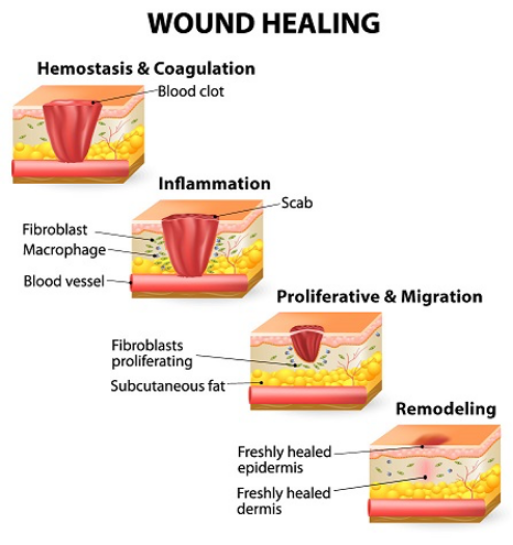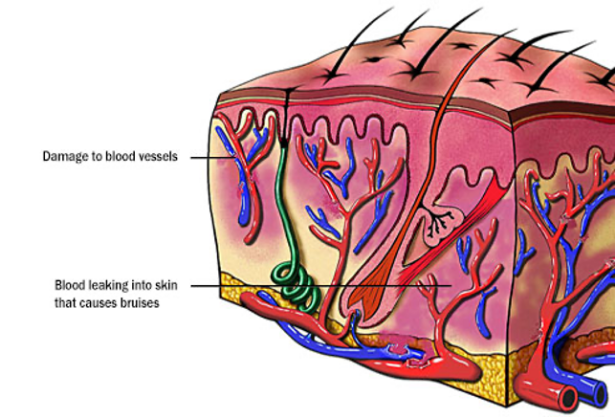The skin is made up of three layers:
1. Epidermis: The outermost layer of the skin that protects the body from the environment. The thickness of the epidermis varies in different types of skin. On the eyelids, the epidermis is 0.5 mm thick, and 1.5mm thick on the palms and soles of the feet. The epidermis contains the melanocytes (the cells in which melanoma develops), the Langerhans’ cells (involved in the immune system in the skin), Merkel cells and sensory nerves. The epidermis regenerates itself approximately every 28 days; all cells are turned over as the most superficial cells are replaced by new ones.
2. Dermis: It is located beneath the epidermis and is the thickest of the three layers of the skin (1.5 to 4 mm thick), making up approximately 90% of the thickness of the skin. The main functions are to regulate temperature and to supply the epidermis with nutrient-saturated blood. Much of the body’s water supply is stored within the dermis. This layer contains most of the skins’ specialised cells and structures, including blood vessels, lymph vessels, sweat glands, sebaceous glands, nerve endings, and collagen and elastin.
3. Hypodermis: The innermost layer of the skin that consists of a network of fat and collagen cells. It functions as both an insulator, conserving the body’s heat, and as a shock-absorber, protecting the inner organs. The blood vessels, nerves, lymph vessels and hair follicles also cross through this layer.




